Eastern Hokkaido: an untouched natural paradise
Eastern Hokkaido is a slice of untouched natural paradise. Comprising the areas of Kushiro, Teshikaga and Akan, the region is full of primeval natural wonders to explore. The area has an abundance of water, from the wetlands of Kushiro to a variety of beautiful lakes. Not only do these water sources nourish the area's diverse flora and fauna, they are stunning sights in themselves, with a beauty that changes with the seasons.
The area is home to the red-crowned crane, a bird cherished in both Japanese and Ainu cultures and designated as a Special Natural Monument by the Japanese government. Summer is one of the best times to watch these beautiful birds - parents are raising the young cranes that hatched in spring, and it's common to see these families of three out together.
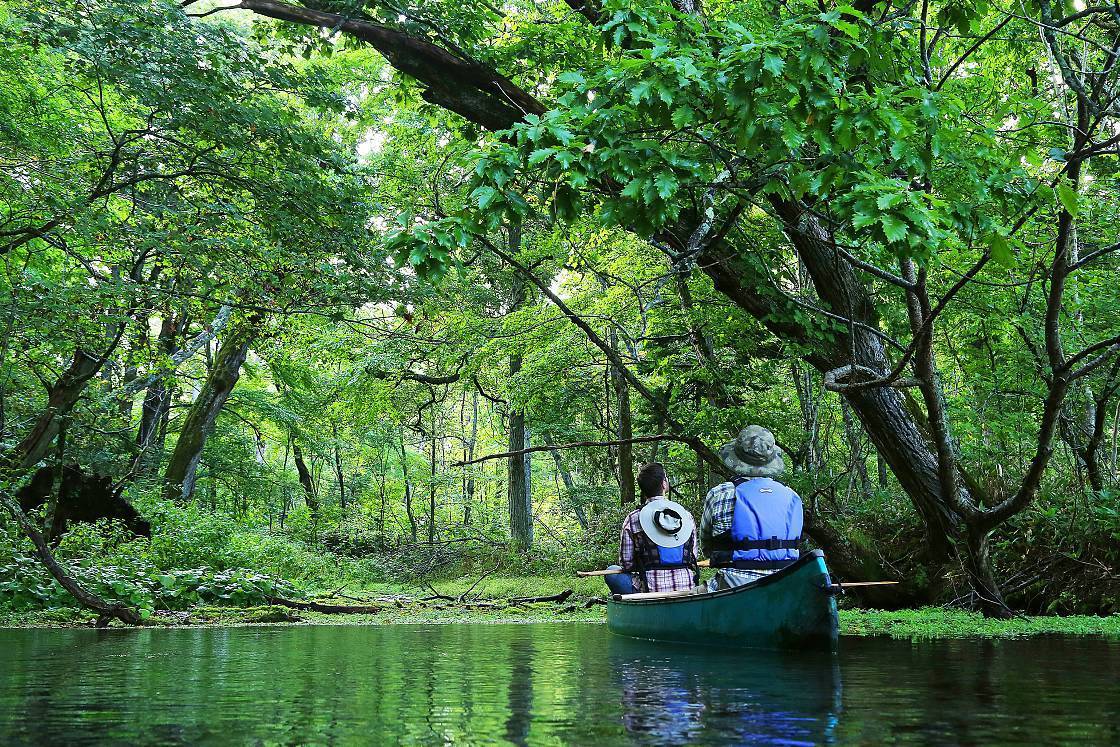
The largest wetland in Japan, with captivating wildlife
Did you know that the easternmost area of Hokkaido used to be part of the ocean floor? The waters receded gradually between 6,000 and 4,000 years ago, but the land remains a marsh to this day, with water pooling in mud and sand. This is Kushiro Wetland.
Covering an area of around 28,000 hectares, the wetland has immense ecological value, earning it designations as a national park and Japan's first Ramsar Wetland of International Importance.
Stroll along the Kushiro River, which feeds the wetland, and you'll notice something unusual about it. It makes no sound. With no stones at the bottom, there's nothing for the water to ricochet off, creating a peaceful scene where all you'll hear is the wind ruffling the birds' feathers.
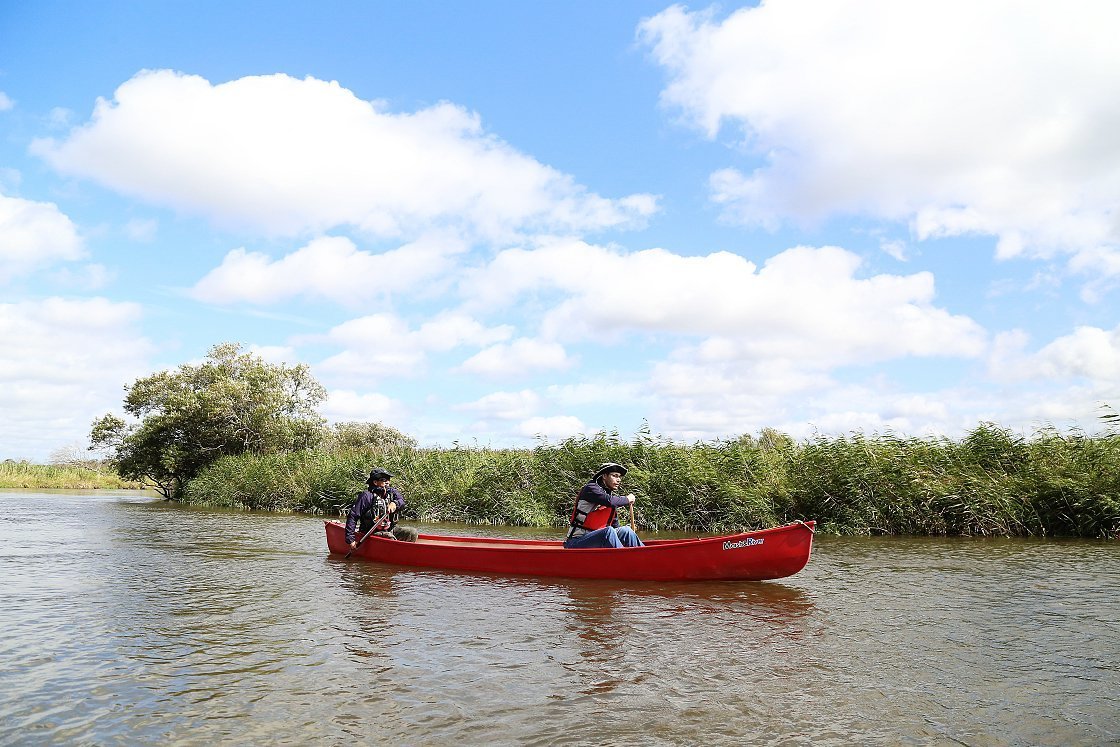
Where Japan's national bird came back from the brink of extinction
Designated as a Natural Monument of Japan, Cape Kirakotan holds a special place in Japan's ecological history as the place where the red-crowned crane came back from the brink of extinction.
The red-crowned crane is such an iconic bird in Japan that it appears in centuries of art, on Japanese money and as the logo of Japan Airlines, but overhunting and destruction of its habitat devastated the population so badly that at the beginning of the 20th century, it was thought to have become extinct. Miraculously, a small population of surviving cranes was found here at Cape Kirakotan in the 1920s.
The cape was designated as a national park that was later expanded to become Kushiro-Shitsugen National Park as we know it today, and efforts began to regrow the red-crowned crane population, with sanctuaries providing food during the leaner months of the year. A little over 1,000 cranes now live in Hokkaido as a result of these initiatives.
When you arrive, you might wonder why this area is called a "cape" when there's no sea around it. Remember how Kushiro Wetland used to be under the sea? Around 6,000 years ago, Cape Kirakotan was where the land met the sea.
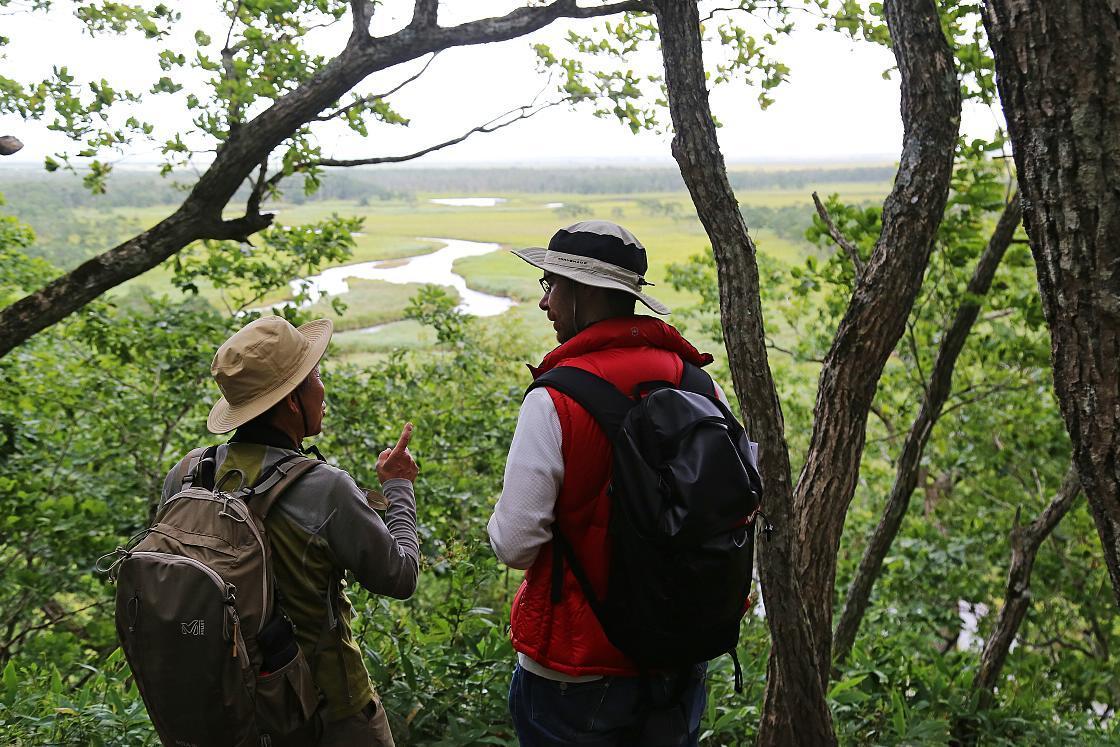
The birthplace of a popular Japanese dish
Soba, thin noodles made from buckwheat flour, is a popular dish in Japan today. But what many people don't know is that it may have originated in eastern Hokkaido! A lot of water is needed to grow buckwheat - an order that eastern Hokkaido fills with its abundance of water. The tradition of making noodles from buckwheat began here, and Chikuroen, said to be Hokkaido's oldest chain of specialty soba restaurants, is thought to have begun in Kushiro.
You'll soon spot something unusual about Kushiro soba noodles - they're green! The green noodles are created by mixing chlorella with white Sarashina buckwheat, a tradition started by the founder of Chikuroen to symbolize the freshness of the buckwheat that he used in each and every customer's noodles.
Another long-standing tradition here is to pair soba noodles with delicious local sake. During the Edo period (1603-1868), soba restaurants were a popular place to enjoy a drink, so these two popular elements of Japanese food culture evolved together.
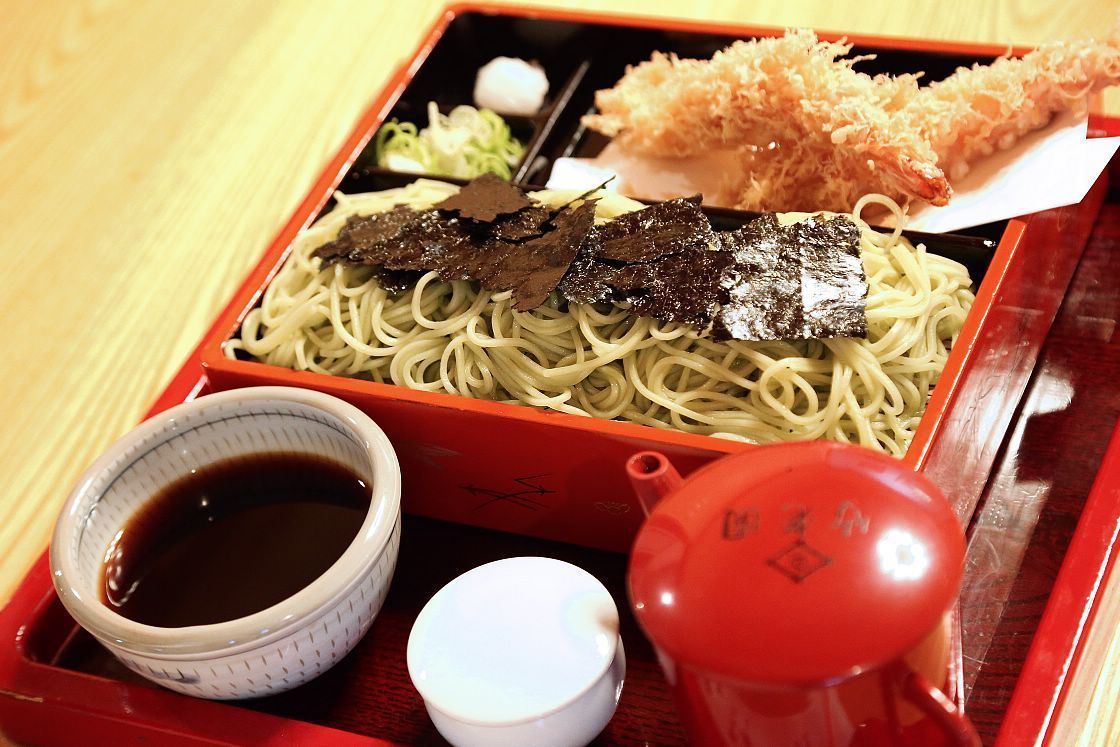
A holy ground for trout anglers
The Akan area is a holy ground for Japanese fishing enthusiasts because of its stunning scenery. It's particularly popular among trout anglers for its abundant populations of native Hokkaido species such as the white-spotted char and sockeye salmon. If you're lucky, you might see sockeye salmon leaping up to 2 meters out of the water!
With no man-made shores, Lake Akan is surrounded by rich primeval forest that has been around since ancient times. For an extra-special experience, sign up for an early-morning fishing trip. You'll arrive before sunrise and see the scenery changing with the light as the sun comes up.
The forest around Lake Akan is an inseparable part of the lake's ecosystem - the trees stop the lake and its rivers from being contaminated by rainwater, creating a wonderful living environment for the trout... and a fantastic fishing spot for you!
Lake Akan is also famous for its marimo moss balls, a rare form of algae that grows in a ball shape.
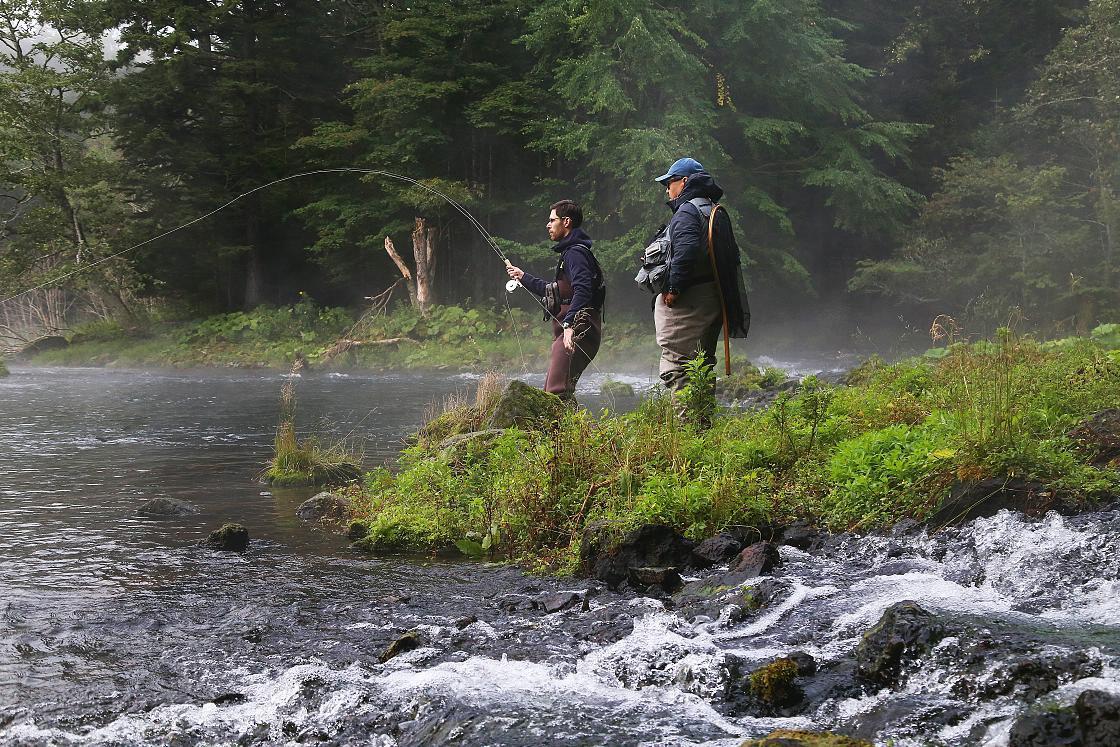
Hike around two of eastern Hokkaido's eye-catching lakes
If you love hiking through beautiful natural scenery, it's hard to find a more captivating spot than Lakes Nishikinuma and Onneto.
Measuring about 200m around, Lake Nishikinuma has a deceptive appearance - it looks brown, but it's actually clear! The brown color comes from sediments of iron ore on the bottom, a characteristic that can only be seen in a few lakes in the world.
Lake Onneto, the larger lake with a circumference of 2.5km, is known as one of Hokkaido's three biggest secluded lakes. The color of the water varies dramatically depending on the season, the weather and the angle you view it from, earning it the nickname "goshiki-numa" (five-colored lake). And its off-the-beaten-track location makes it one of the most peaceful spots you could find.
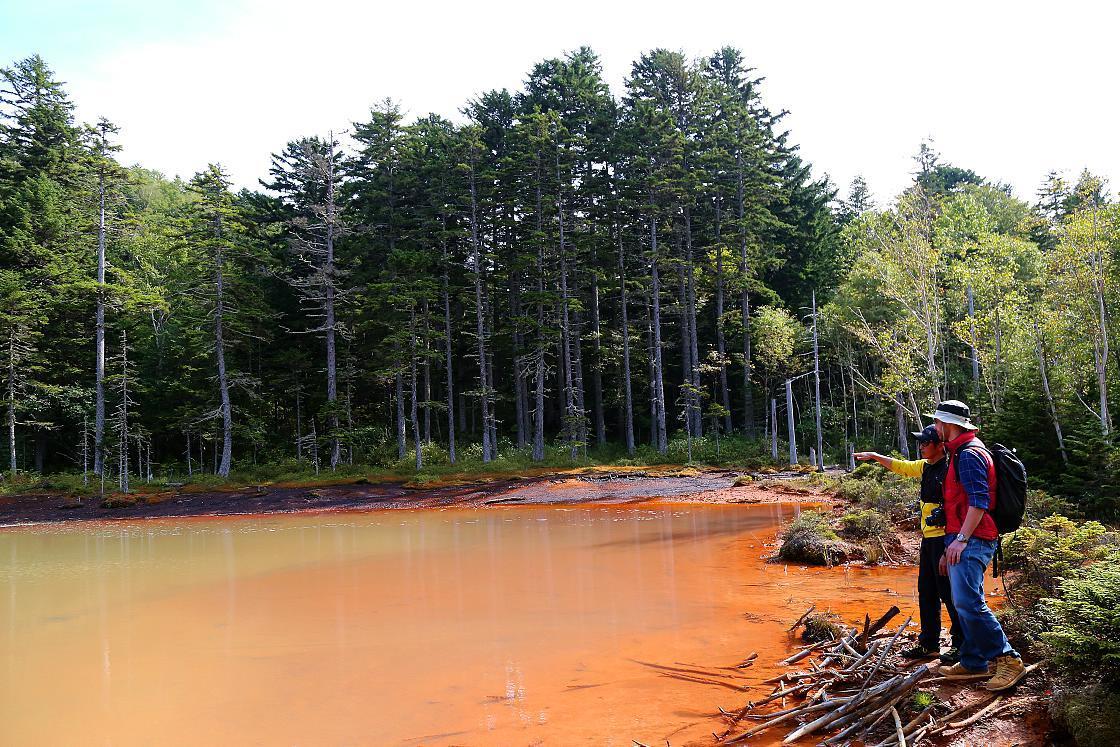
A people who understand the importance of nature
The beautiful, unspoiled nature of eastern Hokkaido is an important part of the culture of Hokkaido's indigenous Ainu people. The Ainu people have an animist tradition, where elements of nature are revered as spiritual beings, and place importance on coexisting with nature and being grateful for the life that animals, plants and fish give to people.
Local Ainu people share their culture with visitors in areas such as the Akan Ainu Kotan, a traditional Ainu settlement. At Poronno, a restaurant that has been in business for around 40 years, you can try delicious Ainu food. Ainu cuisine has subtle flavors that accentuate the fresh natural ingredients, and the careful preparation of the dishes reflect the respect that the Ainu people have for the animals, plants and fish that give them life. Make sure you try the venison bowl - diner after diner has raved about it - and the fruit tea.
While you're there, you'll hear spellbinding performances on the mukkur, a traditional instrument similar to a jaw harp. Don't be fooled by its simple appearance - making those melodies is much more difficult than it looks. Mukkur players make music on the fly, expressing their feelings or capturing sounds from the natural world.
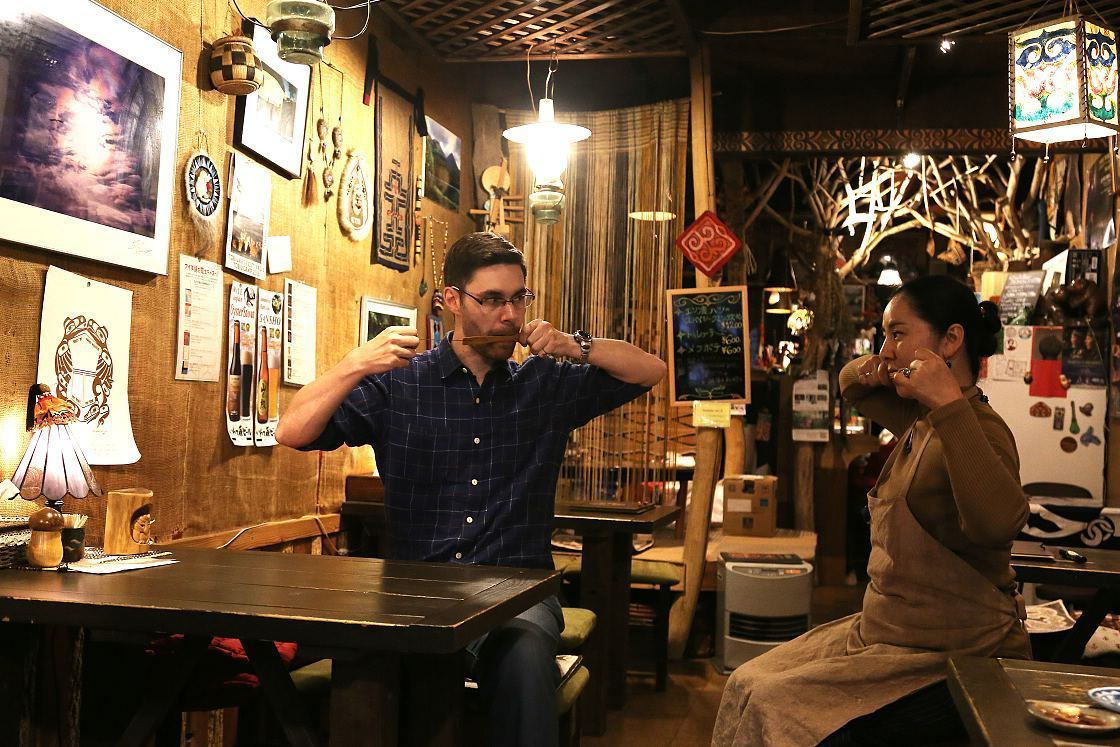
A canoeing hotspot
One of the best spots for kayaking in eastern Hokkaido is the Wakoto Peninsula, which juts into Lake Kussharo in Teshikaga. Lake Kussharo is Japan's largest caldera lake, with a circumference of about 57km, while the Wakoto Peninsula measures about 3km around with a fishtail shape (that's where it gets its name - it comes from the Ainu word wakkochi, meaning "the curved part of a fish's tail").
Like Lakes Nishikinuma and Onneto, the area is very secluded and peaceful. The peninsula is a fascinating volcanic area, with hot springs everywhere and an area called Oyakotsu Jigoku (Oyakotsu Hell) at the tip of the peninsula, where plumes of smoke rise from the ground.
In the tour provided by a local guide, kayaking up the peninsula is only half of the experience. When you get back on land, you'll be served a hearty picnic lunch made with ingredients from the greater Teshikaga area and cooked right in the volcanic smoke and hot springs!
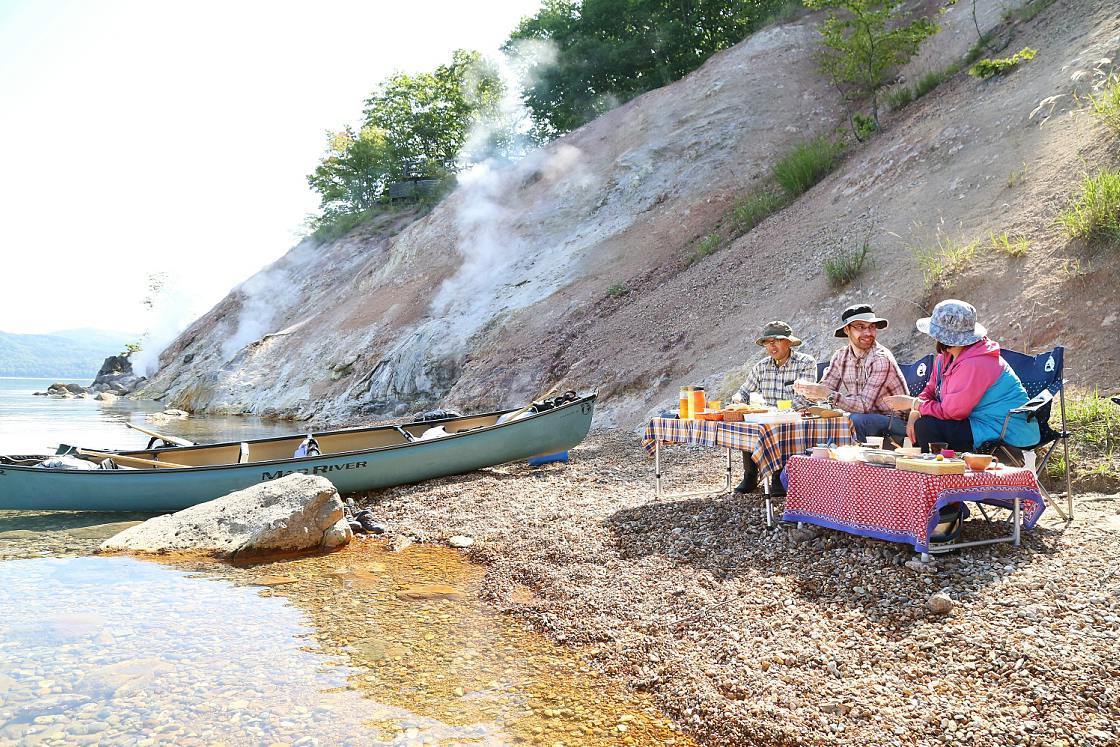
Kagami-no-Ma: a captivating spot near the Kushiro River
37 rivers flow into Lake Kussharo, but only one flows out: the Kushiro River, which winds its way through Kushiro Wetland and out to sea. Not far from the Kushiro River, you'll find a spring called Kagami-no-Ma. The name means "mirror room" and you'll soon see why - the water is so clear, you'd swear you're looking in a mirror. No matter what the season, the water remains cool, never rising above 10 degrees Celcius. With its clear water and beautiful greenery all around, you won't be able to tear yourself away.
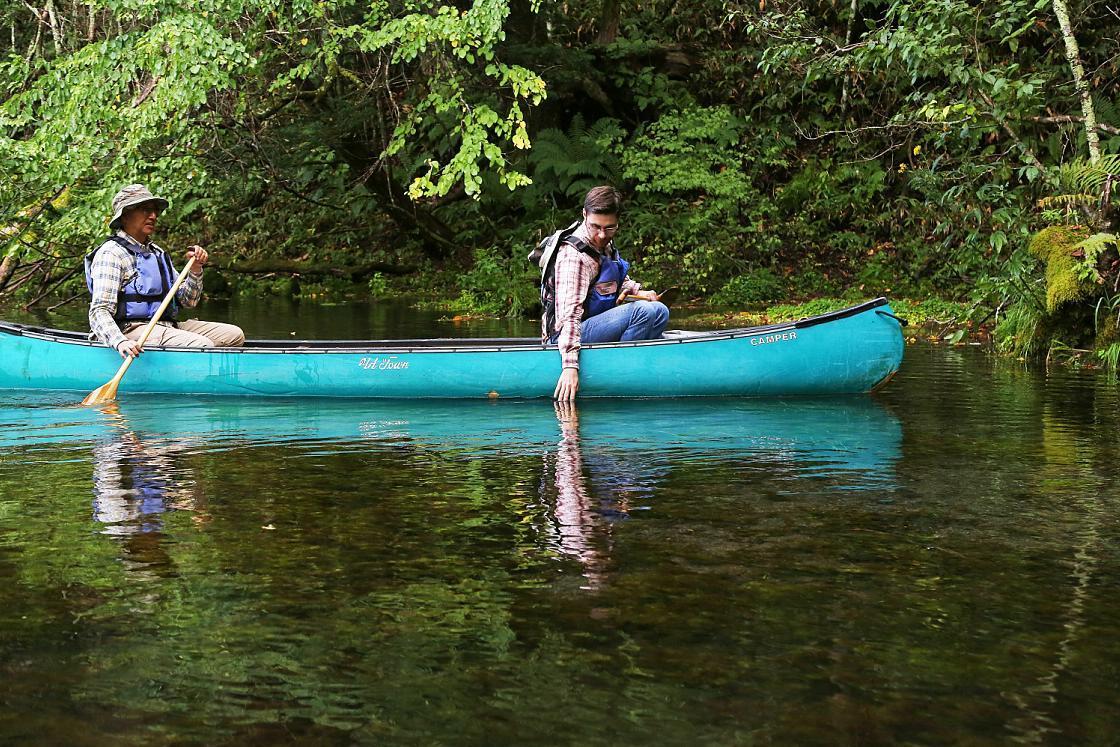
A vivid blue lake and a sea of clouds
No trip to eastern Hokkaido is complete without visiting Lake Mashu. One of the clearest lakes in the world, the deep blue color of this lake is so distinctive that it has been dubbed "Mashu blue" by locals. An interesting mystery about Lake Mashu is that there are no rivers flowing in or out, yet the height of the water never changes. With almost no impurities - helped by the 300- to 400m-high cliffs around it - Lake Mashu is an important source of life for the area.
As if Lake Mashu wasn't an incredible enough sight already, it's often covered by the biggest sea of clouds you'll ever see. From your vantage point on one of the surrounding mountains, the constantly shifting clouds will look just like the ebb and flow of the tides. If you're lucky, you'll see a double sea of clouds over Lake Mashu and Lake Kussharo! The best time to see it is right when the sun is coming up - if there's one thing worth waking up early for, it's this!
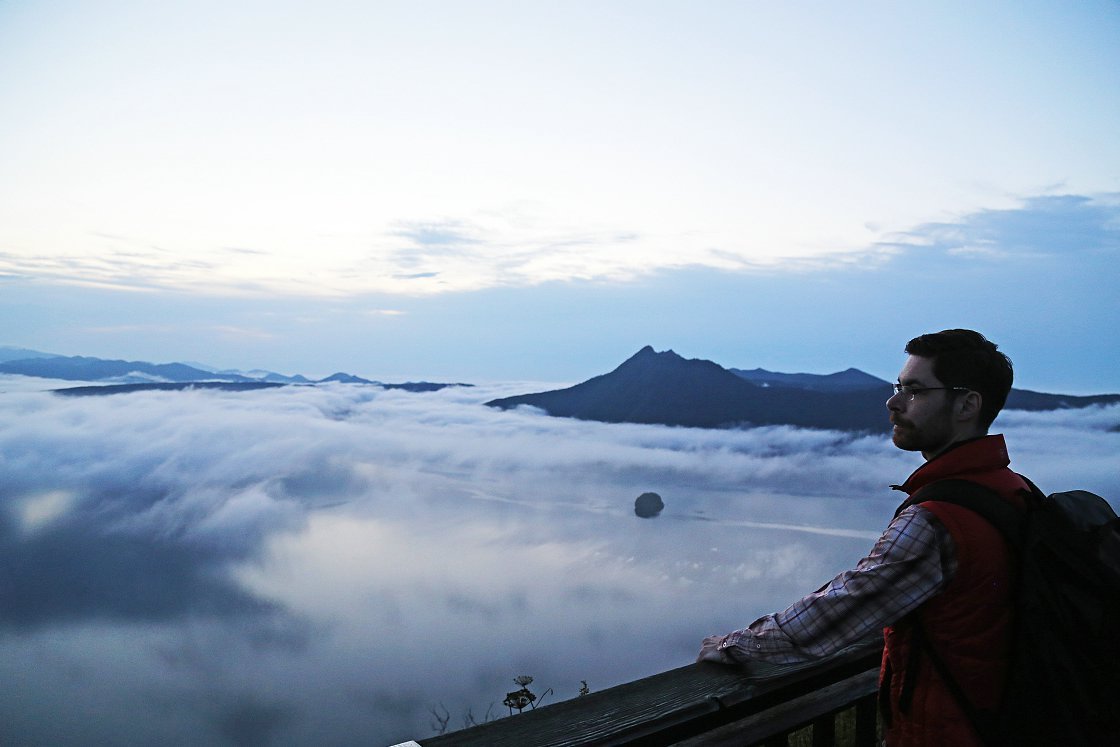
From its peaceful untouched nature and exhilarating adventure tourism to its unique food and unforgettable cultural experiences, eastern Hokkaido is number one on the list of destinations for nature lovers in Japan.